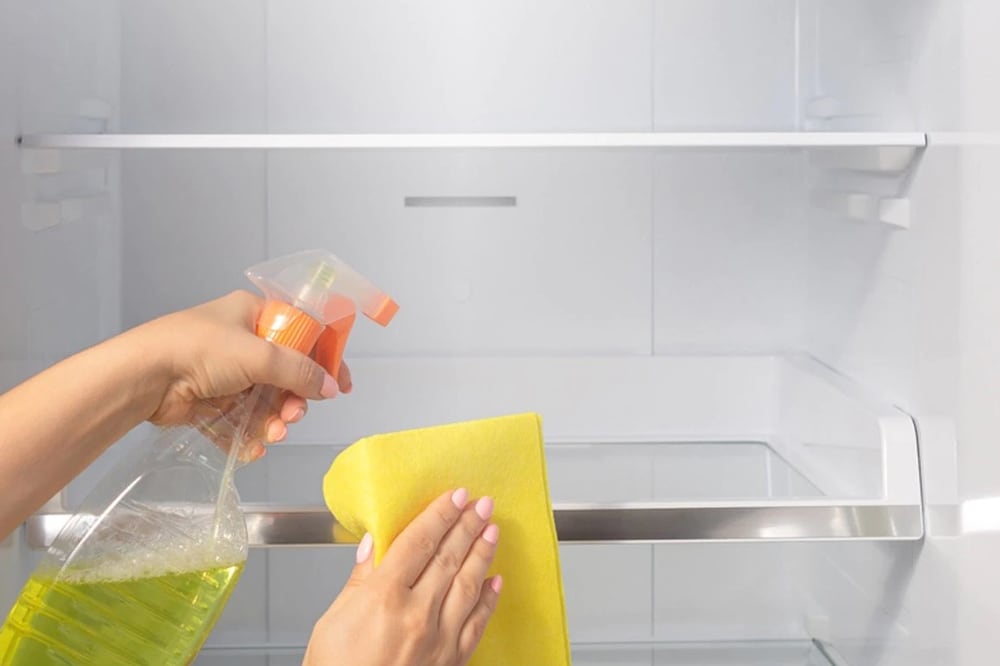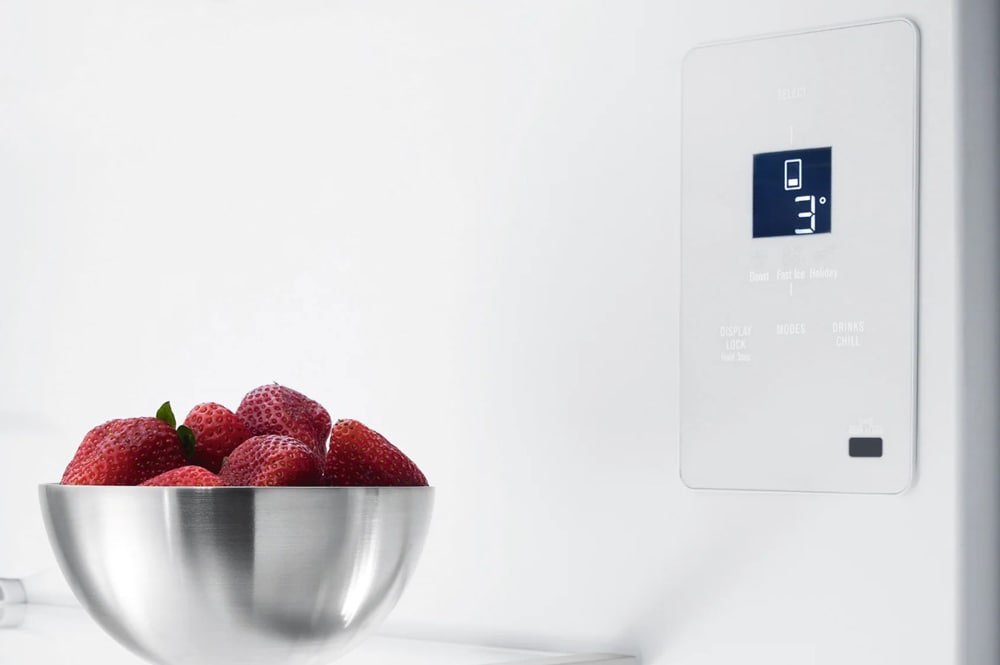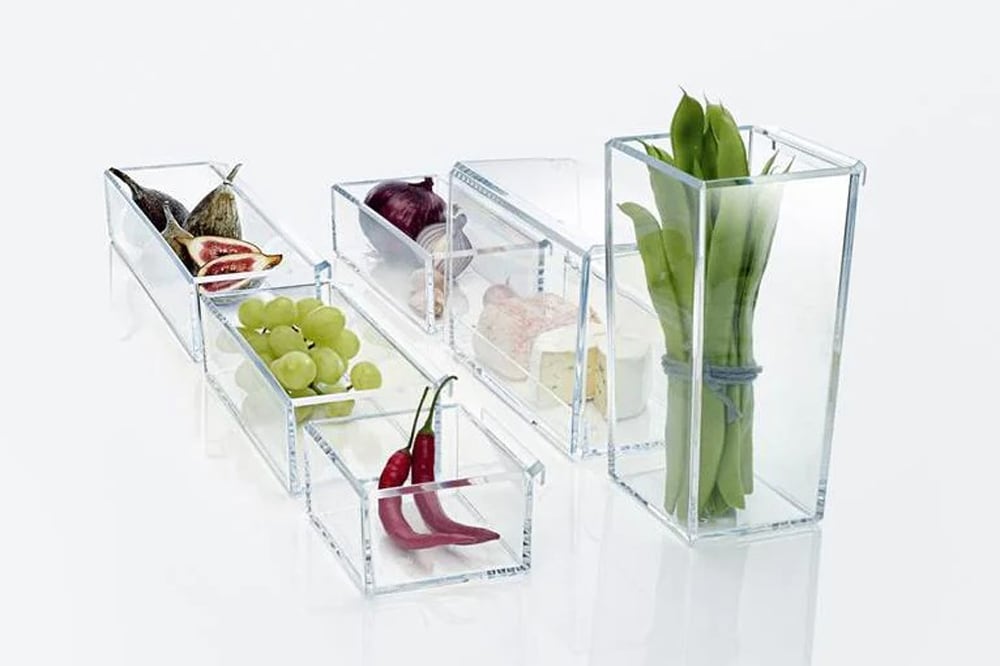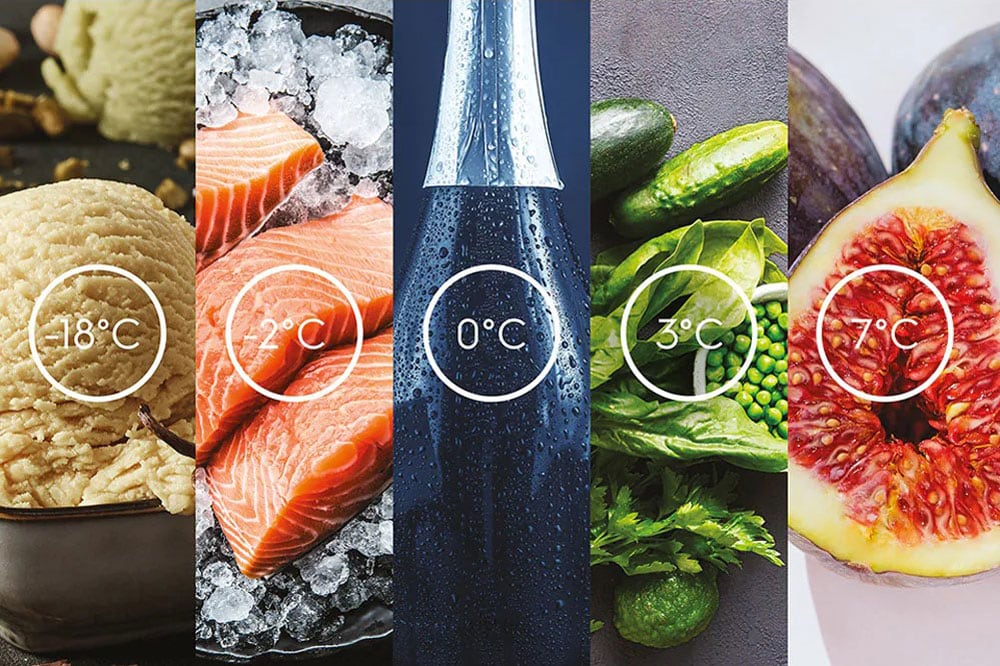How to store vegetables and fruits in fridge: 9+ easy ways
6 minute read |

Knowing how to store vegetables and fruits in the fridge not only protects your wallet, it also helps you in leading a more sustainable life and avoiding food waste. for as long as possible.
Here are some useful tips to preserve vegetables and fruits, we will also cover:
- Tips to keep vegetables and fruits fresh longer
- Fruits and vegetables that don’t need to be refrigerated
- How long can you store fruits and vegetables in your refrigerator?
How to store vegetables and fruits in fridge: 9+ tips to keep them fresh longer
1. Avoid pre-washing
If you’re going to store veggies or fruit in the fridge, save the washing for just before you’re going to use them. The reason is that the added humidity from washing may make produce rot more quickly. If you absolutely must wash vegetables or fruit first, let them dry well before putting them in the fridge.
2. Maintain steady humidity in your refrigerator

To ensure that your fruits and vegetables stay fresh for a long time, it’s vital that they’re stored at a steady, not too high humidity level. Some refrigerators come with features that help you maintain such a level. In Electrolux refrigerators, look for the TasteLockAuto feature, with a membrane that automatically releases excess moisture to reduce condensation and stop your produce from spoiling early.
Explore more outstanding feature with Refrigerators Guide: Tips and FAQs to help you choose the right fridge!
3. Store whole vegetables and fruits
Don’t cut produce before putting it in the fridge, since cut-up vegetables and fruits will rot more quickly. Only remove roots and stems, but keep the remainder of the cutting for when you’re cooking. If you’re planning to use the vegetables very soon, you can cut them first and keep them in a container inside your refrigerator’s crisper. However, you should be aware that they will not keep as long.
4. Don’t store everything in the same place
Put leafy vegetables and herbs into the crisper and separate other fruits and vegetables on different shelves. For example, you may want to store vegetables with high water content separately from those with lower water content. Keep in mind that storing different kinds of produce closely together may make them rot or wilt more quickly.
5. Keep your refrigerator clean

Hygiene is very important to storing fruits and vegetables. Produce that is beginning to rot will very quickly affect other vegetables and fruits in the vicinity. Even small pieces can have a wilting effect, so make sure that you clean your crisper or refrigerator shelf after removing rotted produce. Not only will it help you keep your food fresh, it will also prevent bad smells from developing in your refrigerator.
6. Use paper instead of plastic
Closed plastic containers or bags capture moisture and may make your vegetables and fruits rot. Ideally, you should only use containers with firm or stemmed vegetables. Either use paper packaging with holes or plastic nets to keep your produce fresh and delicious. If you’re storing mushrooms, paper bags are also your best bet, since they capture their moisture.
7. Keep track of your produce
To make sure that you don’t store fruits and vegetables for too long or forget about them, we recommend that you label the packages with a “use by” date based on your experience of how long they keep in your refrigerator. That way, you’ll be able to plan for what to cook and when.
8. Set the correct temperature in your refrigerator

To keep your fruits and vegetables fresh for as long as possible, it’s vital to set the correct temperature in your fridge. Vegetables and fruits are best kept at temperatures of 1-4 degrees Celsius. If you set it too low, produce with high water content will quickly freeze, and if you set it too low, you give bacteria free reign to spoil your produce.
9. Check on your produce regularly
If you’re storing fruits and vegetables for several days or even weeks, make sure to check on them regularly to catch any signs of spoiling as soon as possible. Some pieces of fruit or vegetables can rot more quickly than others in the same batch, so make sure to remove those right away. Otherwise, they will make the rest of your produce spoil more quickly too.
10. Use containers

If you’re storing firm vegetables like carrots, broccoli, celery or cabbage, consider putting the dry vegetables in a container and putting that container in your refrigerator’s crisper. This way, they will stay fresh and crunchy without being contaminated by other vegetables that may rot more quickly.
Fruits and vegetables that don’t need to be refrigerated
There are some fruits and vegetables that should never be kept in the fridge. Most prominent among them are tomatoes, which quickly lose their flavor and texture when kept in the refrigerator. The same goes for potatoes, which should be stored in a dark and cool (but not cold) place. Avocados, onions, peaches and bananas also feel more at home on your kitchen counter than in your refrigerator.
How long can you store fruits and vegetables in your fridge?
Sliced fruit will keep for about 5 days after you’ve put it in the refrigerator, provided you follow the tips we listed above. Note that some fruit like apples may see a slight change in color, but they’re still edible. However, for most fruit and vegetables, we recommend that you don’t slice them ahead of time, since their skin provides natural protection against spoiling, keeping them fresh for weeks.
While different batches and qualities of fruits and vegetables can sometimes keep for longer or shorter, here are some average recommendations for how long you can keep fruits and vegetables in your refrigerator, provided they are stored properly.
|
Fruits |
Storage times in fridge |
|
Apples |
3-4 weeks |
|
Blueberries |
1-2 weeks |
|
Grapes |
5-7 days |
|
Pineapple |
3-5 days |
|
Watermelon |
2 weeks |
|
Mango |
5-7 days |
|
Vegetables |
Storage times in fridge |
|
Green beans |
up to 5 days |
|
Broccoli |
up to 5 days |
|
Cabbage |
1 week |
|
Carrots |
up to 4 weeks |
|
Cauliflower |
1 week |
|
Celery |
up to 2 weeks |
|
Corn |
up to 2 days |
|
Cucumbers |
1 week |
|
Green onions |
up to 10 days |
|
Lettuce |
1 week |
|
Mushrooms |
up to 7 days |
|
Bell peppers |
up to 2 weeks |
|
Spinach |
up to 5 days |
There are just estimates and storage times can vary depending on your refrigerator as well as the batch of vegetables or fruits you’ve purchased. Remember to think of reducing waste and increasing sustainability when shopping for groceries so you don’t buy much more produce than you and your family can consume. Around 1.3 billion tons of food are wasted around the world each year, so storing your produce properly and eating it before it spoils is a fantastic way of lessening your impact on the environment.
Final thought

We do hope that after keeping up at this length, you’ve learned how to store vegetables and fruits in the fridge. These tips will help keep your family fit and healthy while being mindful of your environment, also contributed an important part of sustainable living. To support your healthy lifestyle, Electrolux refrigerators offer forward-thinking technologies like TasteLockAuto and TwinTech Cooling that help you control temperatures and humidity levels in your fridge so you can enjoy fresh fruits and vegetables whenever you want.